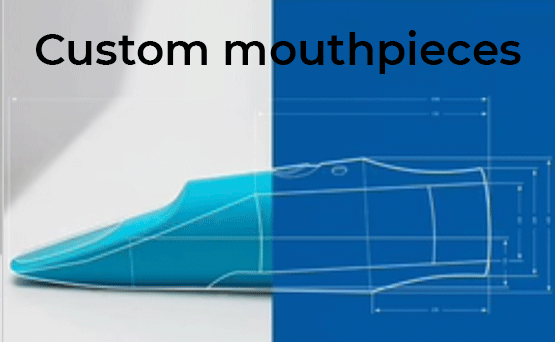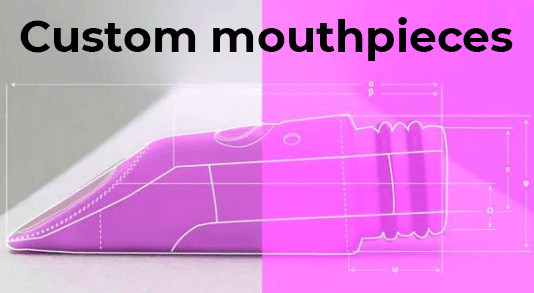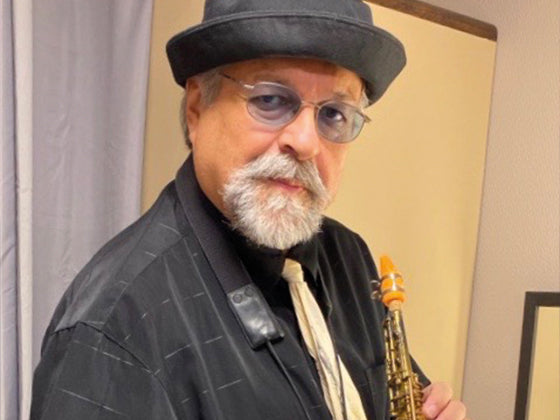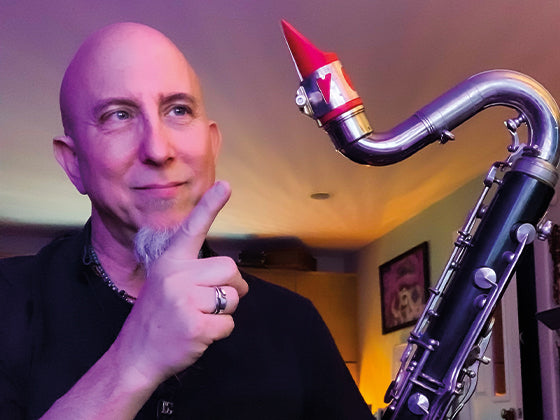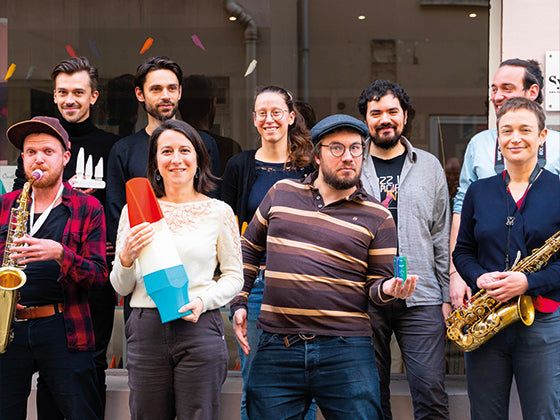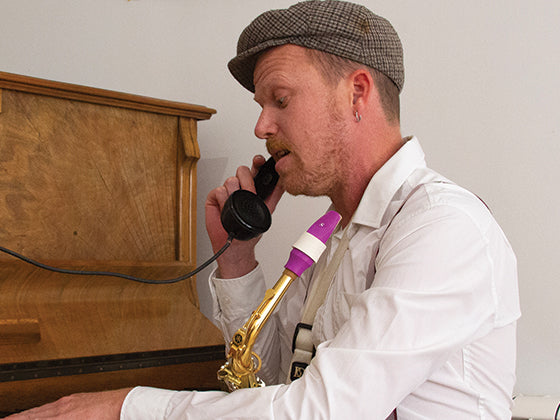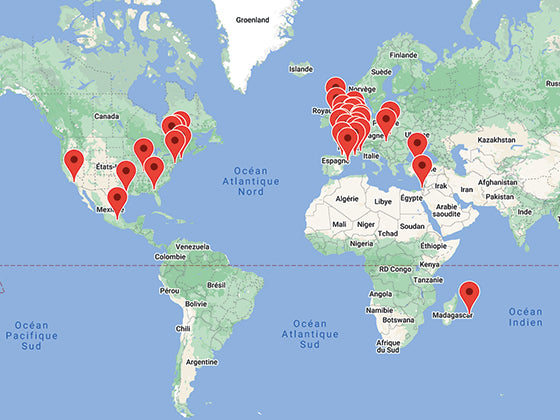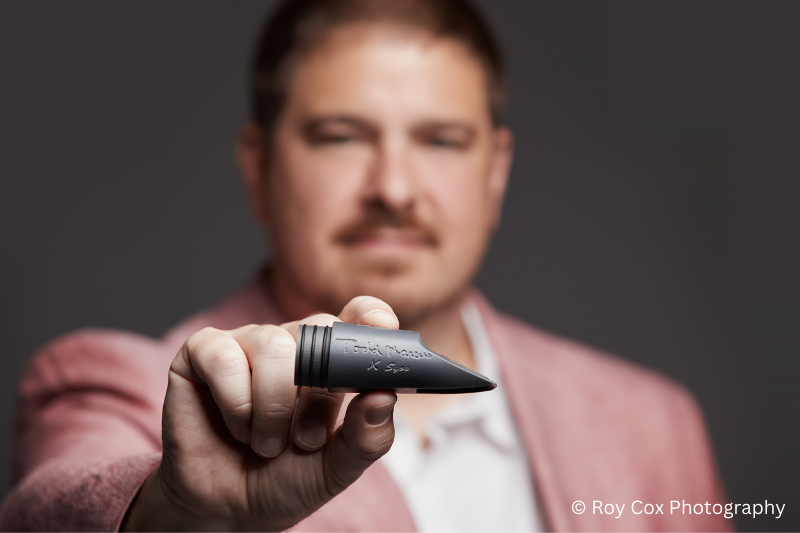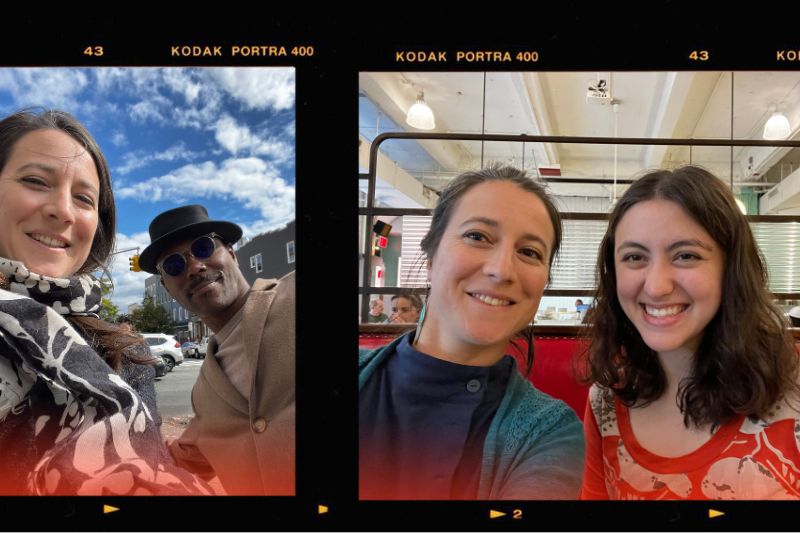A few weeks ago, Todd Marcus gave a really interesting workshop at the ClarinetFest, an international congress on clarinet, in Denver. His workshop was entitled "Maximizing sound options on bass clarinet & clarinet" and we are really luck because he recorded it and shared it with us.
So you can hear the whole workshop, as if you were there! Enjoy :)
Todd Marcus is playing his Todd Marcus signature mouthpiece on B flat Clarinet and his Todd Marcus Signature mouthpiece on Bass Clarinet.
Here is a transcript of the video:
"So, Uncle Sam, wants you to enlist in the Army, right? I want to help you to increase your sound. So let's talk about how we have gone about them.
So the first thing is air flow. Now, for all of you as players, if you teach this, it is probably already standard. We do long tones for years. I came back from that jam session; I couldn't hear myself. The next several years were that from the low end of the horn, all three octaves, all the way up. We got to build up that air flow.
And in who's playing bass clarinet, and who's playing B flat clarinet? Okay, so for those that play bass clarinet, you know how much air it takes to fill this up, this big point. When you go from that B flat to the bass clarinet, the first thing is like, 'Wow, it takes so much air.' So building that up is crucial. And then, in the process of this, you're going to find that you start blowing faster, more and more air in, and at a certain point, the regular mouthpieces that we have won't be able to accommodate it.
I started when I made that switch from B flat clarinet to bass clarinet. I was told to get a Selmer; start. Has anybody used that kind of a standard? And after a certain point, it was just like it was blown so hard that the reed instead of vibrating would just shut off. So we'll talk about how we contend with that, but that's the first step, building up that air support.
So we got a lot of new options that are out here these days. We're going to talk about some of those. We talked about the importance of open mouthpieces because otherwise, if you blow so hard, it's going to close off on you. We're going to talk about baffles. We got a bunch of materials now; look, this is crazy how many people here these vendors have different mouthpieces. This did not exist 20 years ago; we didn't have all these options, right? I know when I made the switch to bass clarinet in '97, you had that Selmer C-star; you had some Vandoren. Now look, all these vendors, all these options. It's not just saxophone players anymore. So you got the traditional rubber, you got Syos printing them out of 3D; come on, this crazy stuff, people. I'm seeing on Instagram nowadays people are making mouthpieces for bass clarinet out of metal. So if you feel like that's your solution, that's there to be had. I bought one, by the way; a guy, Arnold Montgomery, down in Louisiana, that sucker; it's beautiful. That sucker weighs so much; it's crazy. Things we would never know as clarinetists before this stuff was available to us.
So let's talk about how I've gone about it. This is the Todd Marcus journey. We talked already about the importance of having that more open mouthpiece because as you blow into it, the Selmer C-star, those close ones, they're not going to cut it anymore. Now, part of the challenge is that you got to adjust; like we here in high altitude making adjustments, but any gear is going to require adjustments.
The next thing is the big baffle, and I call this my MacGyver mouthpiece. And so this was out of again looking at what all these options were available for saxophone players and thinking, 'What are these baffles that saxophone players have, but I don't see that as an option for clarinet? Let me experiment with that.' So, I had been with my mouthpiece at the time using a guy in Maine named Bill Street to make the mouthpieces, and he kept making them more and more open. And then I wanted to explore a baffle. He said, 'Well, get some modeling clay, and you create the shape and start there.' And I did that, a lot of experimentation. And then, at that point, I went to Home Depot because no good bass clarinetist orders something off of Amazon or eBay. You go to Home Depot, and I got epoxy. Do people know what that is? How do you all know what epoxy is, working construction on this side? That's great. So, you know you take the epoxy, the two compounds; you mix them together; the chemical reaction; and then it makes that material in there rock hard. And then I shaped a little bit, and I played on this bad boy for 15 years, maybe longer. Again, things are changing; we got more options now. I love this thing; it's done me well. I did three records with it; it allowed me to hang in there in these kind of intense settings. Now, it was a little bit grittier, and I decided that I wanted to see if I can get a little more warmth in it. Got to a point where I wanted. I needed to keep that volume of projection, but I wanted to get more of the traditional bass clarinet warmth and toning. And so during the pandemic, my project, one of my projects was exploring all kinds of different stuff in gear, and so I had been seeing these Syos-looking mouthpieces all over the place, kind of this Skittles-looking mouthpiece, and then I looked it up. Oh, okay, so they're 3D printing. It's not like cherry-flavored reeds and all that kind of stuff, right? And so it began a conversation with them, and I said, 'Hey, I'm doing some unique stuff; I got this big baffle, and can I get my volume projection, not sacrifice that, but get some more warmth in there?' And I ended up spending 18 months back and forth. They would send prototypes; I would test it; I would make all the detailed notes and send it back. But in the end, the good news is it was, and so hopefully, you could hear in me playing the instrument just now, you're getting that volume projection. Maybe I'm not the absolute traditional bass clarinet tone; it's a little bit different. We all got our own tone, but you got that warmth in there still. And so that's this thing again. What do you see that big baffle there? And so that's a big thing.
And I'm curious; I haven't gotten to walk around to the different vendors to see if other folks are exploring that at this point. But I do think that for us clarinetists and bass clarinetists, this is something that's unique, if not super uncommon. And I think that one of the things that when people look at my mouthpieces, they say, 'Oh, you got a baffle.' Yeah, sure, let me see it. And they're like, 'Oh my God, that's like a crazy baffle.' This is extreme, right? It's extreme, but we're trying to do something extreme; we're trying to hang in there in a nonet, in a big band, and play and not have to switch over to saxophone to keep up with the sax. So that's what we did.
So did that make your sound brighter by doing that, and is that why you switched to another
mouthpiece later on because that was your the one you used for 15 years right? Yeah, so that one was definitely brighter and got a little grit to it, which I liked. So that's where with the Syos one, I thought, okay, I don't want to lose that volume of projection, but I do want to get some more of the warmth back in there naturally. So, I achieved that, I feel like, and I was getting to the end, and I didn't know if it was going to work out or not because they were sending the... we were getting pretty far in there, and the prototypes; it's still like 5-10% less than what I hear is able to do. But in the end, we succeeded on that. So, in the spirit of stuff to try, you got those here today, so if anybody wants to try them out, we can do that later on.
I do want to share some testimonials because I think that that's important. And I guess that they're a little bit chopped off, but I'll read. So, you know, I'm not just here trying to hawk something meaningless. This is what we call a game-changer. So, the mouthpiece is the biggest part, and this is someone that has put a lot of time and effort into it. That mouthpiece is the biggest part. The next would be the reeds. Who here is working with cane reeds? Most people? Okay, who is doing any synthetic? We got a few. Okay, for years, I was using fiber cells, yeah, fiber cells. And again, I said earlier about all this stuff; don't think that you just going to... if you say, 'I want to buy one of these mouthpieces,' you're going to take this, and it's going to be like, 'Oh, I'm going to do my concert next week.' Everything is adjustments, right? You change a clarinet; you change your mouthpiece; you change your reed; you got to put the work in and give your body and your embouchure time to adjust with those reeds. I remember the first time I tried to play that sucker; it was barking like crazy. It had that volume of projection, but it was pretty raw. Over time, and not that long, over a period of a few weeks, I started getting it back. I started winning that battle, getting into a more warm sound.
So, there's a ton of options down here. I actually switched over a couple of years ago now to Légère. I felt that that gave me, again, in this quest to get more away from the grittier, brighter side and get more to having that warmth, I found that the Légère offered that for me. You use the European cut? Uh, I actually use tenor reeds. Which cut? American? I have to look at... I have to look. I use a Vandoren. There's a few of them that work well for me.
Ligatures, let's talk about that just real quick. All these ligatures; oh, it's gold-plated, silver-plated, it's platinum-plated, it's cloth. Does it make any difference? Has anybody seen this Michael Lowenstern video? This is a shoelace; $2.99 at Walmart; right there's your ligature; this is a classic cable clamp. He goes through a bunch of them; it's hilarious; the difference is so minimal. So to this issue, I'm going to tell you from my experience, if you find something works for you, boosts up that projection, let me know; I'm curious about it. But for me, the ligature is not a big deal.
We got things like, with our pads, you got different materials. You got leather pads; you got synthetics; within them, you can get resonators. Brown ones, those are plastic; they got metal ones too. You know, subtle, more subtle, smaller differences, but things that can at least be worth exploring and trying for yourself.
Bells, we've got again, all this exposure, things that are available to us. I have explored that stuff too. I saw, I see, across from Lone Star, is Luis Rossi. Yes, got one more minute, one more minute. Uh, I tried his bell out years ago. And then, I even got creative; you see this wooden bell here that's got curves to it; I found a craftsman, a master woodworker, that carves a bell out of wood. So I say that to say that I've gone all in; I've gone down that rabbit hole and explored all this crazy stuff, and that mouthpiece is the big difference-maker; the baffle is a big difference; the reeds are a big difference. Again, will we ever be able to match a sax's top volume? No, but we can hang in there. I'm playing a concert tomorrow, along with Virginia MacDonald, and we're going to, you know, hear me in that large group; hear me in a small group. So come out; see that; you can hear it in action as well. And thanks for hanging."
I hope this helps! Let me know if you need further formatting or any other assistance.

